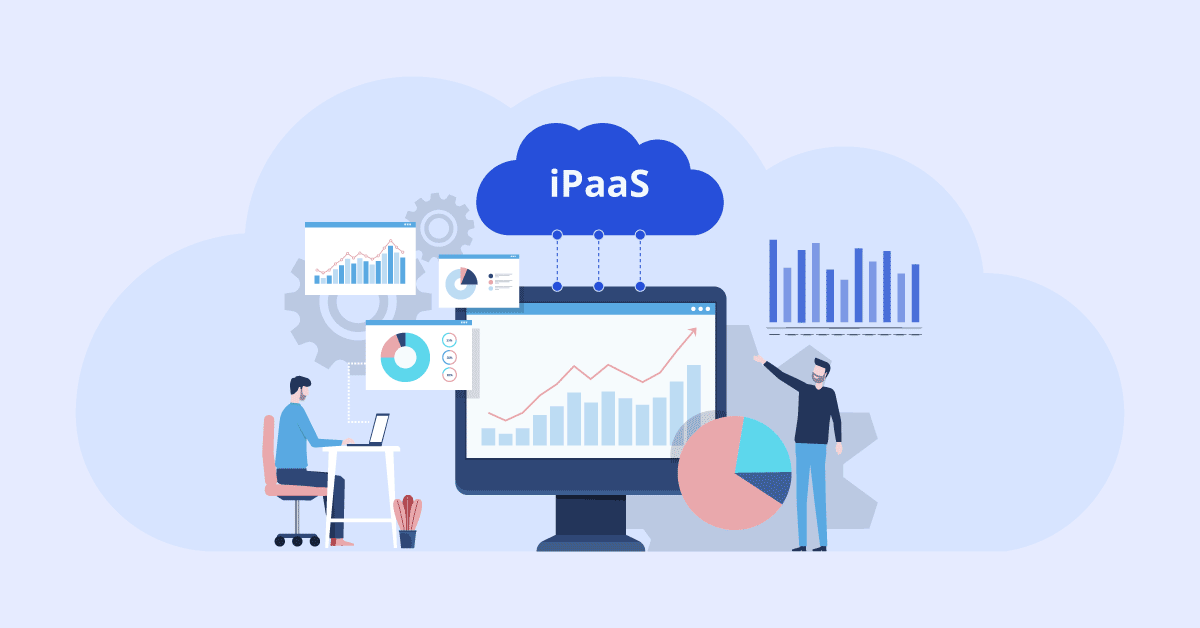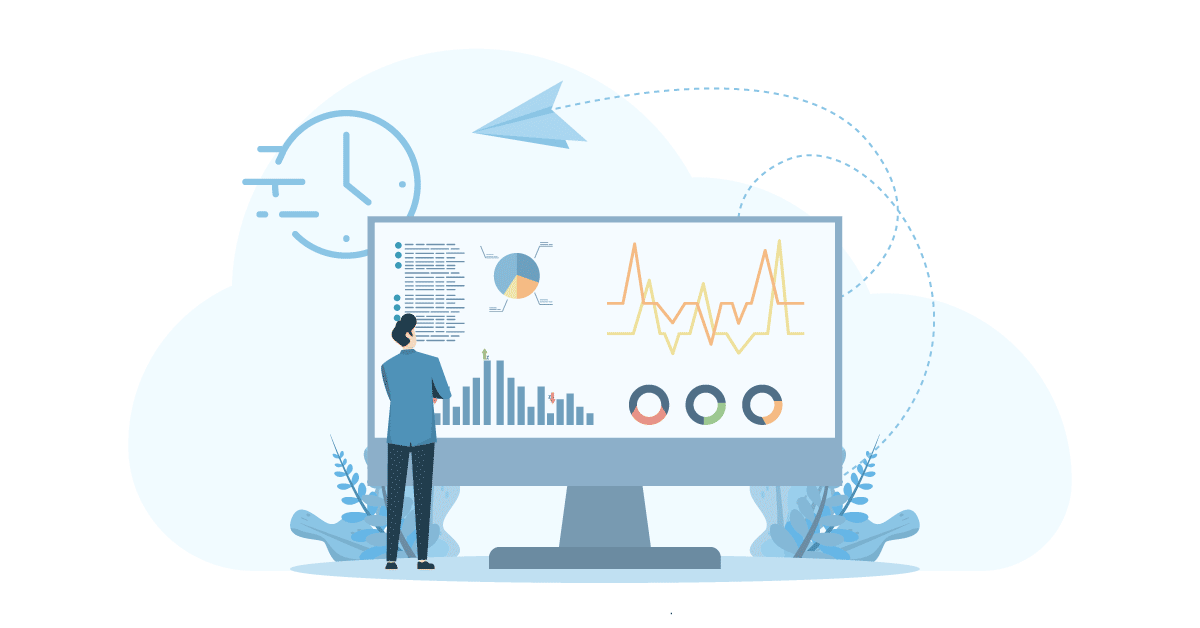In recent years, the iPaaS market has experienced unprecedented growth, transforming the way organizations connect their disparate systems and applications. As someone with over 20 years of experience in this field, I’ve witnessed the evolution and surge in demand for iPaaS solutions. In this blog, we’ll explore the seven key reasons behind the explosive growth of the iPaaS market, the outcomes organizations can expect, and how various clients benefit from embracing this revolutionary technology.
Aonflow iPaaS – Free for First 3 Months!
Build and run up to 1,500 transactions monthly with no cost. No payment info needed!
1. Rise of Hybrid Cloud Environments
As organizations increasingly adopt cloud-based solutions, the need for seamless integration between on-premises and cloud applications becomes paramount. iPaaS platforms provide a unified solution for integrating diverse systems across hybrid environments, ensuring a smooth flow of data and processes.
Outcomes:
- Improved agility and flexibility in adapting to changing business requirements.
- Enhanced scalability by leveraging the benefits of both on-premises and cloud applications.
Who Benefits:
Enterprises with hybrid IT infrastructures, spanning both on-premises and cloud environments.
2. Accelerated Digital Transformation
The push for digital transformation has organizations reimagining their business processes. iPaaS acts as a catalyst by streamlining data integration, automating workflows, and connecting disparate applications, facilitating a faster and more efficient digital transformation journey.
Outcomes:
- Speedier implementation of digital initiatives.
- Increased operational efficiency and reduced time-to-market for new products and services.
Who Benefits:
Companies embarking on or amid digital transformation initiatives.
3. Democratization of Integration
Traditionally, integration projects were complex and required specialized skills. iPaaS solutions simplify integration processes, enabling non-technical users to create and manage integrations through user-friendly interfaces, and reducing dependency on IT teams.
Outcomes:
- Empowerment of business users to take control of integration tasks.
- Faster execution of integration projects with reduced reliance on IT resources.
Who Benefits:
Small to medium-sized enterprises and business units within larger organizations with limited IT resources.
4. API Economy Expansion
The growing importance of Application Programming Interfaces (APIs) in modern business necessitates effective API management. iPaaS platforms play a crucial role in managing APIs, fostering the development of an API economy where organizations can easily share and monetize their digital assets.
Outcomes:
- Monetization opportunities through API-driven services.
- Enhanced collaboration with external partners through secure API sharing.
Who Benefits:
Companies looking to leverage APIs for new revenue streams and partnerships.
5. Data-Driven Decision-Making
In today’s data-centric landscape, organizations rely on real-time data insights for informed decision-making. iPaaS facilitates seamless data integration and synchronization, ensuring that data is available where and when it’s needed, empowering organizations to make data-driven decisions.
Outcomes:
- Improved data accuracy and consistency across the organization.
- Enhanced business intelligence and analytics capabilities.
Who Benefits:
Enterprises across various industries rely on data for strategic decision-making.
6. Cost-efficiency and Resource Optimization
Traditional integration methods often involve significant upfront costs and resource-intensive development cycles. iPaaS solutions, with their subscription-based models and visual development interfaces, offer cost-effective alternatives, reducing both time and financial investments.
Outcomes:
- Cost savings through a pay-as-you-go model.
- Optimal utilization of IT resources with reduced development and maintenance overhead.
Who Benefits:
Budget-conscious organizations and those seeking to maximize their IT resource efficiency.
7. Security and Compliance Assurance
As data integration becomes more pervasive, ensuring the security and compliance of data across systems is critical. iPaaS platform incorporates robust security features and compliance measures, providing organizations with the confidence that their data is handled securely and following regulatory requirements.
Outcomes:
- Enhanced data privacy and protection measures.
- Compliance with industry and regional regulations.
Who Benefits:
Industries with stringent compliance requirements, such as healthcare, finance, and government sectors.
8. Globalization and Business Expansion
In an era of globalization, businesses are expanding their operations across borders. iPaaS solutions facilitate the integration of diverse applications and data sources across different regions, supporting the seamless expansion of businesses into new markets.
Outcomes:
- Rapid deployment of integrated solutions in new geographical locations.
- Improved coordination and communication between globally dispersed teams.
Who Benefits:
Multinational corporations and businesses with international aspirations.
9. Evolving Customer Expectations
As customer expectations continue to evolve, organizations need to deliver personalized and seamless experiences. iPaaS enables the integration of customer data across various touchpoints, helping businesses create a unified view of their customers and deliver personalized services.
Outcomes:
- Enhanced customer satisfaction through personalized interactions.
- Improved customer retention and loyalty.
Who Benefits:
Companies in customer-centric industries such as retail, e-commerce, and hospitality.
10. IoT Proliferation
The Internet of Things (IoT) has witnessed rapid growth, with an increasing number of devices generating vast amounts of data. iPaaS platforms provide the necessary infrastructure to integrate and analyze IoT data, enabling organizations to derive valuable insights and optimize processes.
Outcomes:
- Efficient handling and processing of large volumes of IoT-generated data.
- Improved decision-making through real-time insights from connected devices.
Who Benefits:
Industries investing in IoT initiatives, such as manufacturing, healthcare, and smart cities.
Aonflow is the leading integration platform.
You can kick-start by integrating your first-ever workflow in just a matter of minutes.
11. Faster Mergers and Acquisitions Integration
In an environment where mergers and acquisitions are commonplace, the ability to integrate disparate IT systems quickly is crucial. iPaaS accelerates the integration process, ensuring a smooth transition and enabling organizations to realize synergies faster.
Outcomes:
- Reduced time and complexity in integrating systems after mergers and acquisitions.
- Seamless collaboration and data sharing between previously independent entities.
Who Benefits:
Companies involved in mergers, acquisitions, or partnerships seeking rapid integration.
12. Real-Time Collaboration and Communication
With the rise of remote work and distributed teams, the need for real-time collaboration and communication tools is paramount. iPaaS platforms enable the seamless integration of collaboration tools, ensuring that teams can work together efficiently, regardless of their physical location.
Outcomes:
- Improved productivity through integrated collaboration tools.
- Enhanced communication and information-sharing across the organization.
Who Benefits:
Organizations with remote or globally dispersed teams.
13. Elasticity and Scalability
The ability to scale IT infrastructure based on demand is crucial in today’s dynamic business environment. iPaaS solutions provide elasticity, allowing organizations to scale their integration capabilities up or down based on workload requirements.
Outcomes:
- Cost savings through efficient resource allocation.
- Increased agility to respond to fluctuating business needs.
Who Benefits:
Companies with variable workloads and seasonal demands.
14. Enhanced Customer Retention Strategies
As customer retention becomes a strategic priority, organizations are turning to iPaaS to integrate customer feedback, behavior data, and CRM systems. This integration facilitates the development of targeted retention strategies and personalized customer engagement initiatives.
Outcomes:
- Improved customer retention rates through data-driven strategies.
- Tailored marketing and communication campaigns based on integrated customer insights.
Who Benefits:
Industries with a strong focus on customer retention, such as subscription-based services and loyalty programs.
15. Comprehensive Data Governance
In an era of increasing data regulations and privacy concerns, iPaaS platforms provide robust data governance features. Organizations can maintain control over data access, ensure compliance with data protection regulations, and establish clear audit trails for data integration processes.
Outcomes:
- Strengthened data security and compliance.
- Increased transparency in data handling for regulatory requirements.
Who Benefits:
Industries with stringent data privacy regulations, such as finance, healthcare, and government.
16. Faster Adoption of Emerging Technologies
As organizations embrace emerging technologies like artificial intelligence, machine learning, and blockchain, iPaaS serves as a bridge, enabling seamless integration with existing systems. This accelerates the adoption of cutting-edge technologies without disrupting the existing IT landscape.
Outcomes:
- Rapid deployment of innovative technologies.
- Integration of AI and machine learning capabilities into existing workflows.
Who Benefits:
Companies seeking to stay at the forefront of technological advancements.
17. Real-Time Analytics for Competitive Advantage
In today’s fast-paced business environment, real-time analytics are crucial for gaining a competitive edge. iPaaS platforms facilitate the integration of data sources, enabling organizations to perform real-time analytics and derive actionable insights for strategic decision-making.
Outcomes:
- Faster response to market changes through real-time insights.
- Improved competitiveness through data-driven decision-making.
Who Benefits:
Businesses in industries with rapid market changes, such as retail, finance, and technology.
18. Dynamic Ecosystem Integration
In the modern business landscape, collaboration extends beyond organizational boundaries. iPaaS facilitates the integration of diverse ecosystems, allowing organizations to seamlessly connect with suppliers, partners, and customers, fostering a more dynamic and interconnected business environment.
Outcomes:
- Strengthened partnerships and collaborations.
- Improved supply chain visibility and coordination.
Who Benefits:
Companies engaged in complex supply chains and those relying on extensive partner networks.
19. Self-Service Analytics and Reporting
iPaaS platforms empower business users to generate their reports and analytics through intuitive, self-service interfaces. This reduces the burden on IT teams, enabling departments to independently create, analyze, and visualize data for better decision-making.
Outcomes:
- Increased agility in data-driven decision-making.
- Reduced reliance on IT for routine reporting tasks.
Who Benefits:
Business units with specific reporting needs, enabling them to be self-sufficient.
20. Enhanced Disaster Recovery and Business Continuity
Ensuring business continuity in the face of unforeseen events is a top priority. iPaaS solutions contribute to robust disaster recovery strategies by enabling the seamless replication of data between systems and locations, ensuring minimal disruption in the event of a disaster.
Outcomes:
- Improved resilience against data loss and system failures.
- Faster recovery times during unexpected disruptions.
Who Benefits:
Organizations prioritizing business continuity and risk mitigation.
21. Facilitation of Microservices Architecture
As organizations transition towards a microservices architecture, iPaaS solutions provide the necessary integration capabilities to connect and coordinate microservices. This fosters agility, scalability, and easier management of complex, distributed applications.
Outcomes:
- Improved agility and scalability through microservices.
- Simplified management of distributed and modular applications.
Who Benefits:
Companies adopting or considering a microservices-based approach to application development.
Conclusion
The Integration Platform as a Service market’s growth is driven by an array of factors catering to the diverse and evolving needs of modern businesses. From comprehensive data governance to supporting emerging technologies, iPaaS continues to be a critical enabler for organizations seeking to thrive in an increasingly interconnected and data-driven world. As the iPaaS landscape expands, businesses embracing these solutions position themselves for not only immediate efficiency gains but also long-term resilience and innovation.
As businesses continue to navigate the complexities of a digital-first world, the iPaaS market’s explosive growth is poised to play a pivotal role in shaping their success. The 21 reasons outlined above underscore the diverse benefits that iPaaS solutions offer, making them a crucial component for organizations striving to thrive in an increasingly interconnected and competitive landscape. Whether you are a startup, a mid-sized enterprise, or a large corporation, embracing iPaaS is not just a choice; it’s a strategic imperative for the future.
Aonflow iPaaS – Free for First 3 Months!
Build and run up to 1,500 transactions monthly with no cost. No payment info needed!


